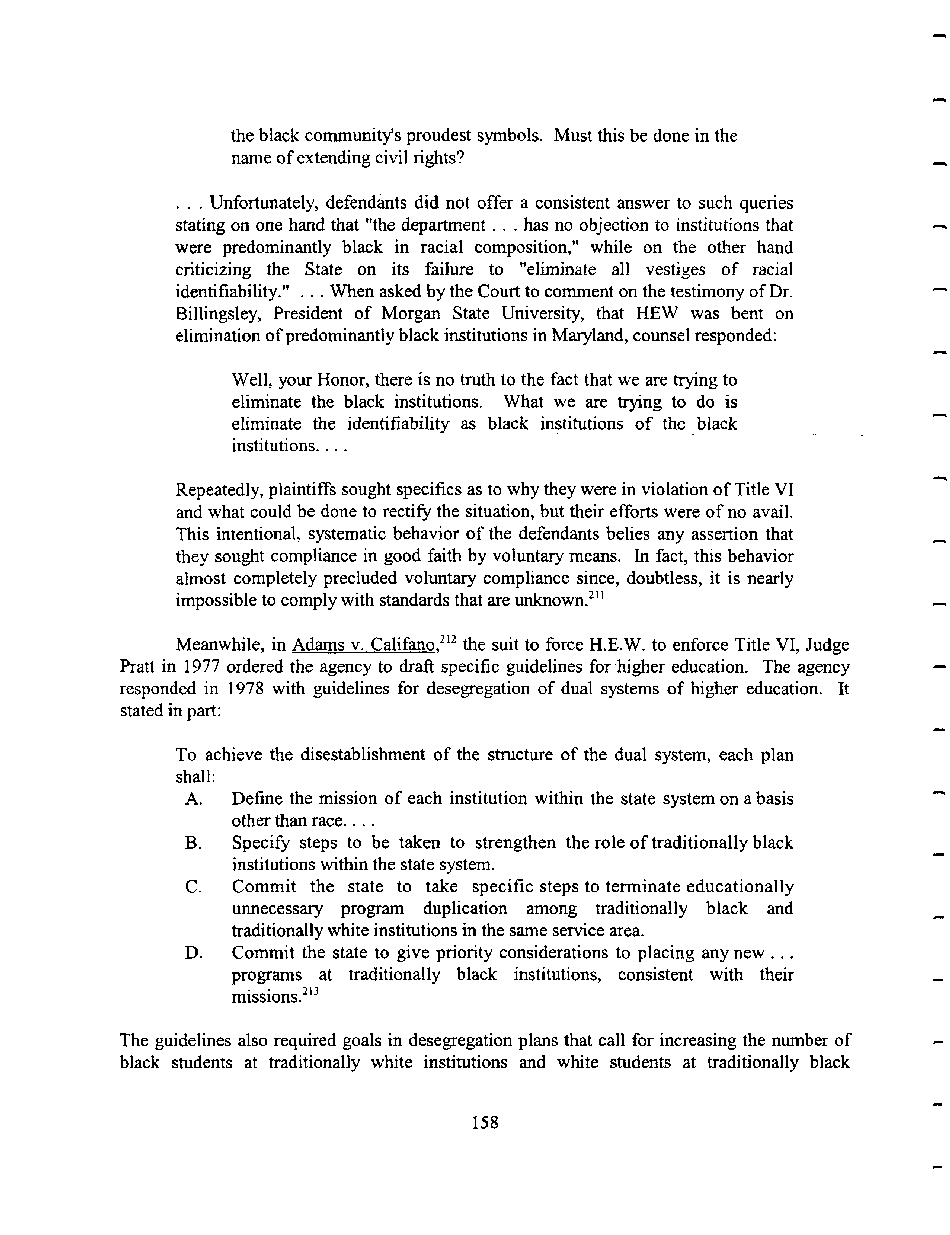|
the black community's proudest symbols. Must this be done in the
name of extending civil rights?
. . . Unfortunately, defendants did not offer a consistent answer to such queries
stating on one hand that "the department . . . has no objection to institutions that
were predominantly black in racial composition," while on the other hand
criticizing the State on its failure to "eliminate all vestiges of racial
identifiability." . . . When asked by the Court to comment on the testimony of Dr.
Billingsley, President of Morgan State University, that HEW was bent on
elimination of predominantly black institutions in Maryland, counsel responded:
Well, your Honor, there is no truth to the fact that we are trying to
eliminate the black institutions. What we are trying to do is
eliminate the identifiability as black institutions of the black
institutions....
Repeatedly, plaintiffs sought specifics as to why they were in violation of Title VI
and what could be done to rectify the situation, but their efforts were of no avail.
This intentional, systematic behavior of the defendants belies any assertion that
they sought compliance in good faith by voluntary means. In fact, this behavior
almost completely precluded voluntary compliance since, doubtless, it is nearly
impossible to comply with standards that are unknown.211
Meanwhile, in Adams v. Califano.212 the suit to force H.E.W. to enforce Title VI, Judge
Pratt in 1977 ordered the agency to draft specific guidelines for higher education. The agency
responded in 1978 with guidelines for desegregation of dual systems of higher education. It
stated in part:
To achieve the disestablishment of the structure of the dual system, each plan
shall:
A. Define the mission of each institution within the state system on a basis
other than race.. ..
B. Specify steps to be taken to strengthen the role of traditionally black
institutions within the state system.
C. Commit the state to take specific steps to terminate educationally
unnecessary program duplication among traditionally black and
traditionally white institutions in the same service area.
D. Commit the state to give priority considerations to placing any new .. .
programs at traditionally black institutions, consistent with their
missions.213
The guidelines also required goals in desegregation plans that call for increasing the number of
black students at traditionally white institutions and white students at traditionally black
158
�
|

